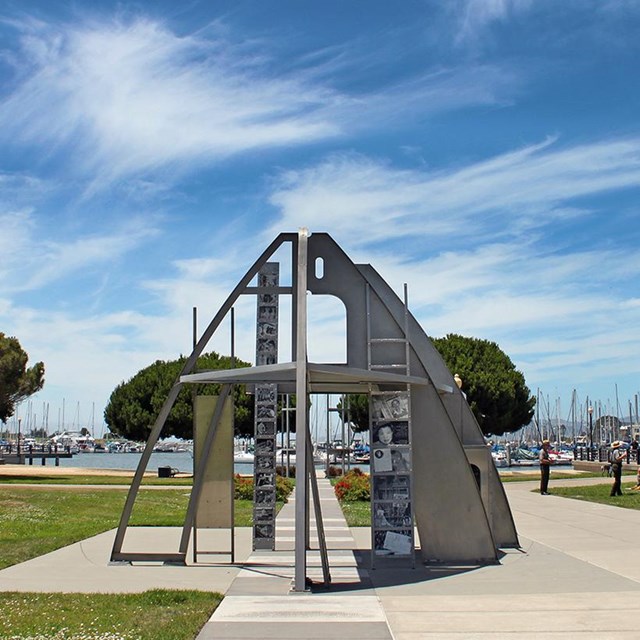Explore the Park, Its Heritage, and HistoryDiscover the captivating stories of the American WWII Home Front, where ordinary people achieved extraordinary feats to support the war effort. From workers in the defense industry to those contributing on the home front, this era was marked by significant social changes and cultural shifts that left a lasting impact on American history. Explore the sites associated with Rosie the Riveter/WWII Home Front National Historical Park, where history comes to life. Our museum and archives collection hold a wealth of artifacts and records that tell these stories. Learn how to research these collections and find out how you can contribute by donating your own artifacts and archives to help preserve this vital chapter of history. People of the WWII Home FrontDuring World War II, the American home front was a tapestry of diverse individuals who came together to support the war effort. Men and women of all backgrounds worked tirelessly in factories, shipyards, and other essential industries, demonstrating remarkable resilience and unity. This section pays tribute to the unsung heroes whose contributions helped shape the course of history. From Rosie the Riveters and African American laborers to Native American code talkers and Japanese American internees, we honor the stories of courage, sacrifice, and determination that define the WWII home front experience. Join us in exploring the lives and legacies of these extraordinary people.
Historic Places of the WWII Home FrontThe WWII home front is dotted with historic places that tell the story of America's industrial might and communal spirit during a time of global conflict. From bustling shipyards and factories to community centers and internment camps, these locations provide a window into the past, highlighting the sites where ordinary citizens made extraordinary contributions. Explore the iconic sites that played pivotal roles in the war effort, and learn about the lasting impact these places have had on their communities and the nation. Discover the rich history and enduring legacy of the WWII home front through the landmarks that shaped it.
Ships and Shipyards: The Backbone of Richmond's WWII EffortDuring World War II, the shipyards of Richmond, California, became pivotal to the Allied war effort, producing a staggering number of vessels that played crucial roles in the conflict. Operated primarily by the Kaiser Shipbuilding Company, these shipyards were among the most productive in the nation, exemplifying innovation and efficiency. Workers from all walks of life, including men, women, and immigrants, came together to build Liberty and Victory ships at record speeds, ensuring a steady supply of materials and troops to the front lines. This remarkable feat of industrial prowess not only supported the war effort but also transformed Richmond into a bustling wartime hub, leaving a lasting legacy on the community and the nation.
More To LearnExplore the rich history and diverse stories of the WWII Home Front through our comprehensive website. Whether you are looking to learn, contribute, or research, our site provides a wealth of information and resources. StoriesThe Rosie the Riveter/WWII Home Front National Historical Park is dedicated to preserving the invaluable stories and artifacts from the WWII Home Front. Your unique perspective and memories of this pivotal time in history are essential to understanding the diverse contributions and experiences of those who supported the war effort from home.Submitting Your WWII Home Front Story or Memorabilia CollectionsLearn about our extensive museum and archives collections, featuring artifacts, documents, and memorabilia from the WWII Home Front. Discover how you can access these collections for research or viewing.
Quick Guide: Home Front History
A short synopsis for new learners 
Essential Terms
A list of terms and descriptions for those learning about the WWII Home Front. 
Timeline of Events
A list of dates and important events during WWII. |
Last updated: January 22, 2025














